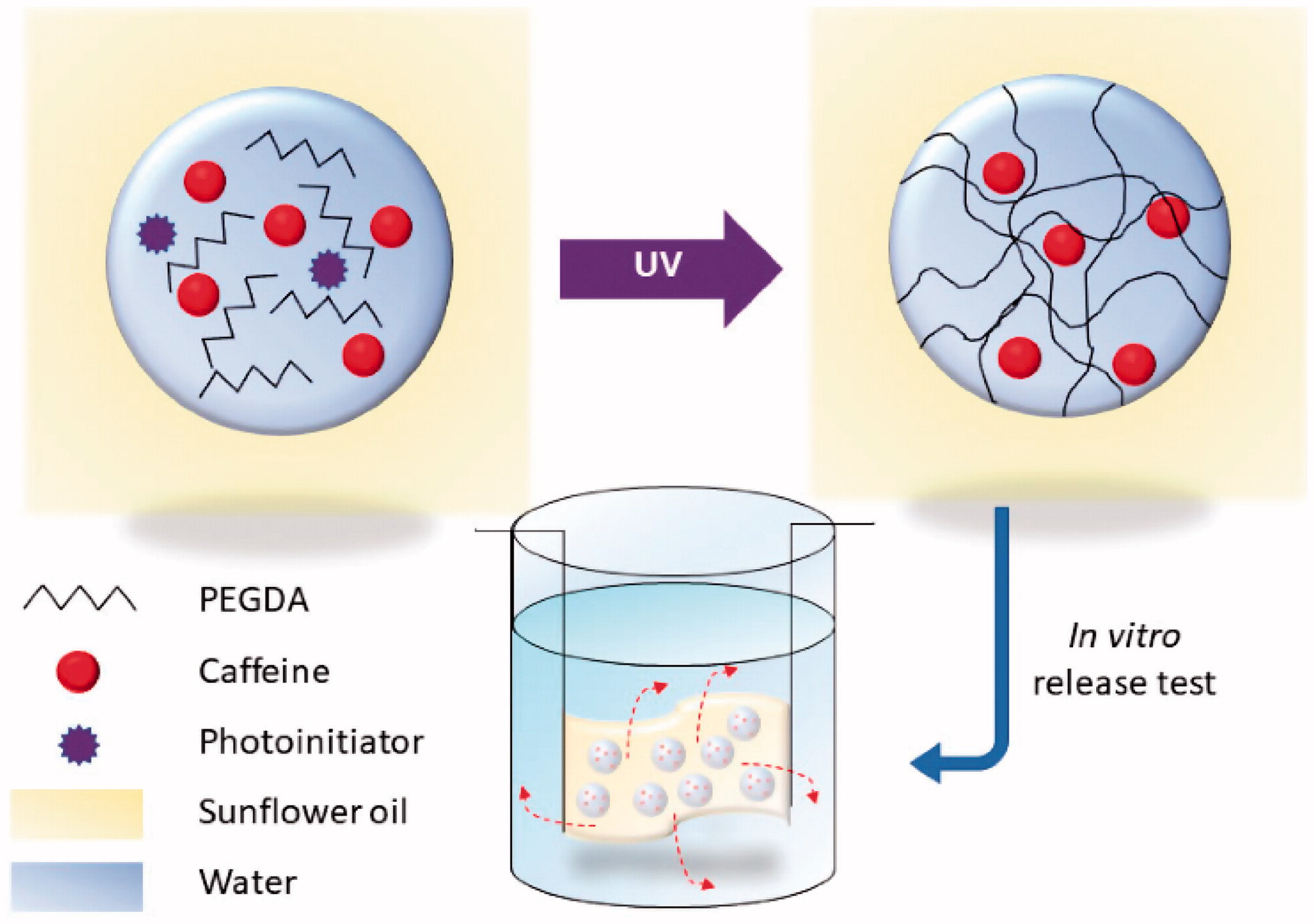Discover our latest findings on the production of polymeric nanohydrogels via UV radiation for drug delivery. Congrats to Fiora Artusio and all co-authors.
Synthesis of high payload nanohydrogels for the ecapsulation of hydrophilic molecules via inverse miniemulsion polymerization: caffeine as a case study
Fiora Artusio, Ada Ferri, Valeria Gigante, Daniele Massella, Italo Mazzarino, Marco Sangermano, Antonello Barresi and Roberto Pisano
The association of an active principle with a nanocarrier is known to improve its stability and protect it from external factors. Nevertheless, loading of nanoparticles with highly hydrophilic substances like caffeine remains a tricky issue. In the present study, inverse miniemulsion systems were successfully coupled to UV radiation to synthesize polymeric nanohydrogels for drug delivery. The proper choice of the continuous and dispersed phase chemical composition led to the entrapment of active principle into the miniemulsion droplets. Our confinement-based strategy enabled unprecedented caffeine encapsulation efficiency inside 100-nm particles. Dimensional, thermal, and spectroscopic characterizations were carried out to investigate both unloaded and loaded nanohydrogels. Furthermore, in vitro release studies evaluated caffeine release kinetics from nanohydrogels by means of dialysis tests. It was demonstrated that controlled and sustained release occurred within the first 50 hours. Experimental data were found to fit the Higuchi model suggesting that the active principle release is diffusion controlled.






